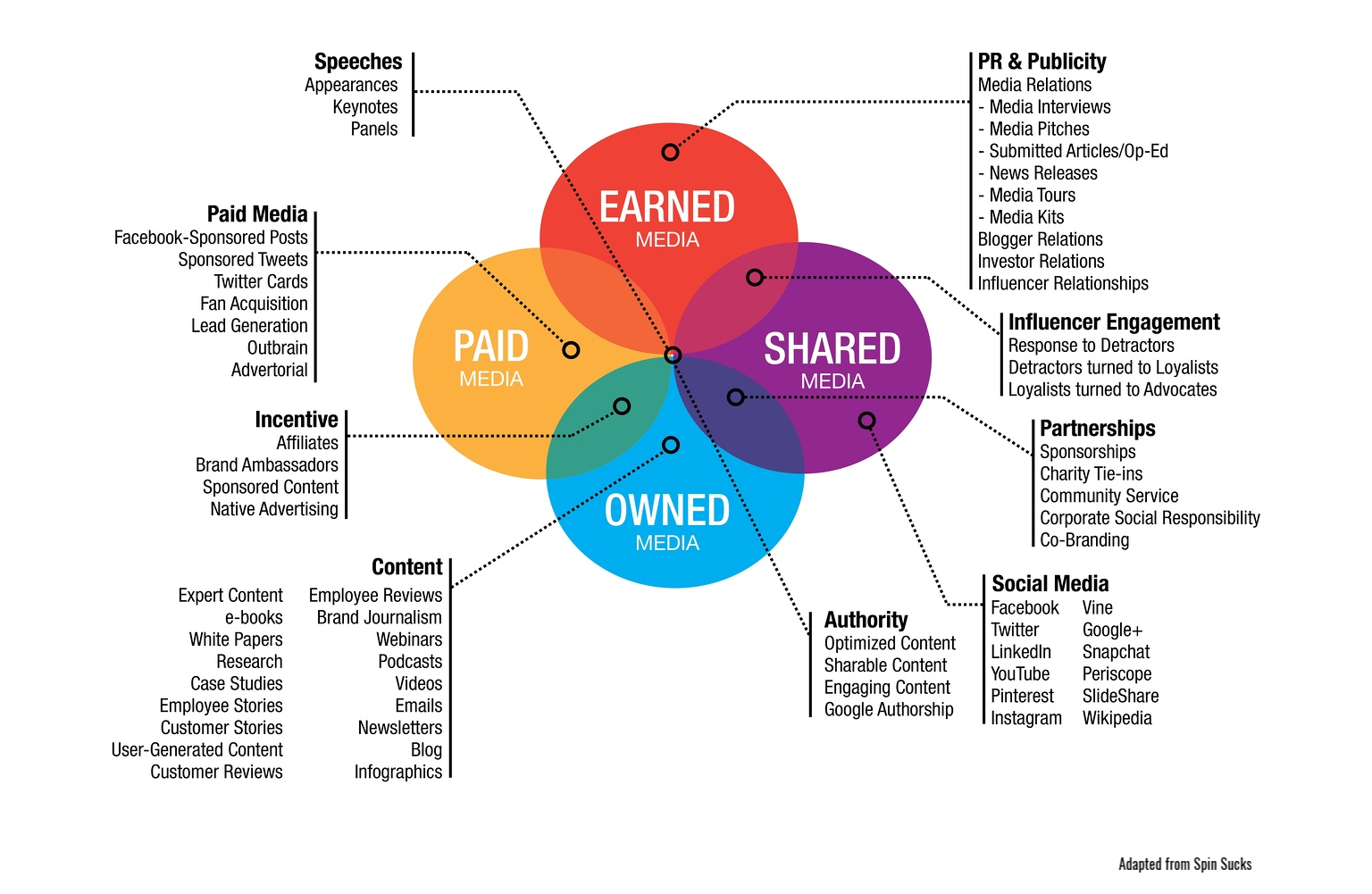3 reasons to change PESO for PR

The PESO model for segregating paid media, earned media, shared media and owned media has been around for years. Some PR and marketing professionals are adopting its communication framework to manage their efforts in reaching audiences. The PESO Venn diagram provides a holistic picture of the many channels that influence audiences’ buyer behavior in the decision-making process.
At Axia Public Relations, we really love the PESO model, developed and advocated by Gini Dietrich, author of Spin Sucks. We appreciate the way it helps companies understand the different types of media and what PR does to help build their brands.
However, there's one thing we don't like about PESO. It leads with paid.
Why is this an issue? We have three primary reasons.
- PR practitioners aren't in the business of buying or paying for content and media.
This is what advertising and marketing does. We don’t make commercials or buy ads. True PR professionals don’t design advertisements or manage media buys. While you should integrate PR into a sound marketing plan, that’s not our sole purpose. We're used to being part of the conversation and integrated into the content. We focus on the part that people are consuming, the content that matters – not content that you must pay for. And certainly not the noisy advertising content that most people have trained themselves to skip, overlook and otherwise ignore. Therefore, using the term paid media to describe what we do isn’t accurate. While PR provides a very important function within the strategic communication plan of a company, our focus is on positive exposure opportunities, reputation and image.
- PESO emphasizes what PR pros don't do – because it leads with paid.
If we’re using PESO to describe what we do, why lead with what we DON’T do? That makes no sense. Again, the framework is valuable in describing the wide swath of actions that communication plays in a company. However, if we’re using this model to educate clients or potential clients as to our business value, it goes against all selling principles to begin the conversation with something outside of our toolbox. If we’re providing customized communication solutions, then let’s start by customizing our model to describe what we really do.
- The PR version of paid media is really a subset of shared media.
Let’s instead emphasize our area of expertise. We strive to position our clients for maximum exposure, and few things today drive that better than social media. Much of how the paid element works, outside of traditional advertising, is really sponsorship of shared media, social media, online reviews and user generated content on channels and sites you share with other companies and individuals. How will we present on social media? What channels are strongest for certain subgroups, and how will we engage them to interact with our brand?
Engagement continues to be a major differentiator in SEO, and it goes beyond clicks and likes. Leveraging paid and owned content (your website, blog, online news room, ebooks and other premium content) to elicit emotions, to tell stories and to encourage interaction is the competitive advantage a positive reputation fosters. That is the kind of expertise we, as PR professionals, use to guide people and paid content along shared media channels.
To that end, we instead recommend ESO, with paid being one of the elements under shared. There is enough confusion already between advertising, marketing and PR. Let’s instead describe ourselves by what we really do when using such a powerful visual to explain the value of PR.

Axia focuses on maximizing ESO for proven inbound marketing success. Download Axia’s inbound marketing e-book today for tips or talk to one of our pros to learn how we can work to help meet your company’s goals.
Clients love Noell’s high tech PR and instructional design experience. She earned her Master of Science in information technology management and business analytics from University of North Carolina. Noell has worked with Axia since November 2017.
Topics: public relations, shared media, earned media, owned media


Comment on This Article